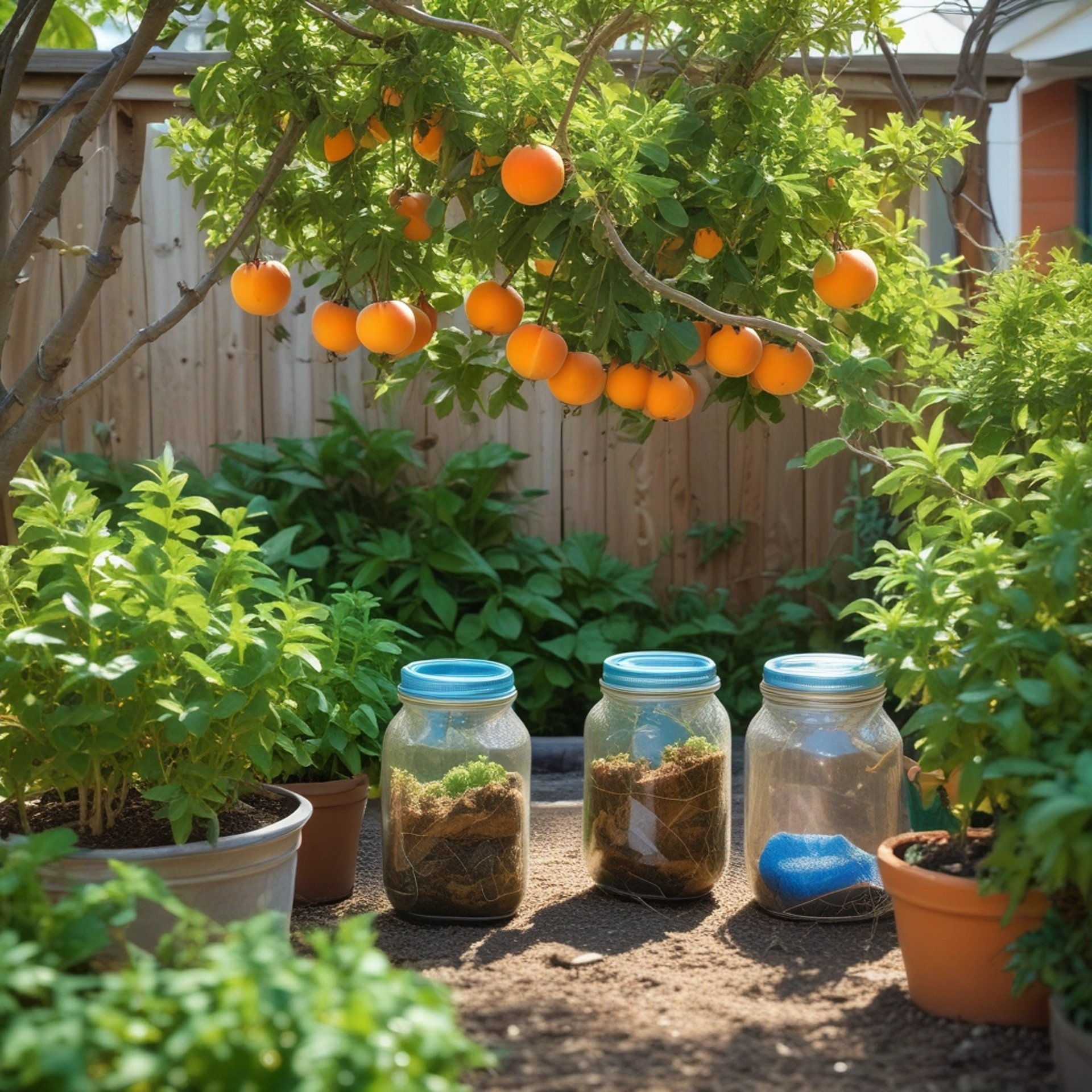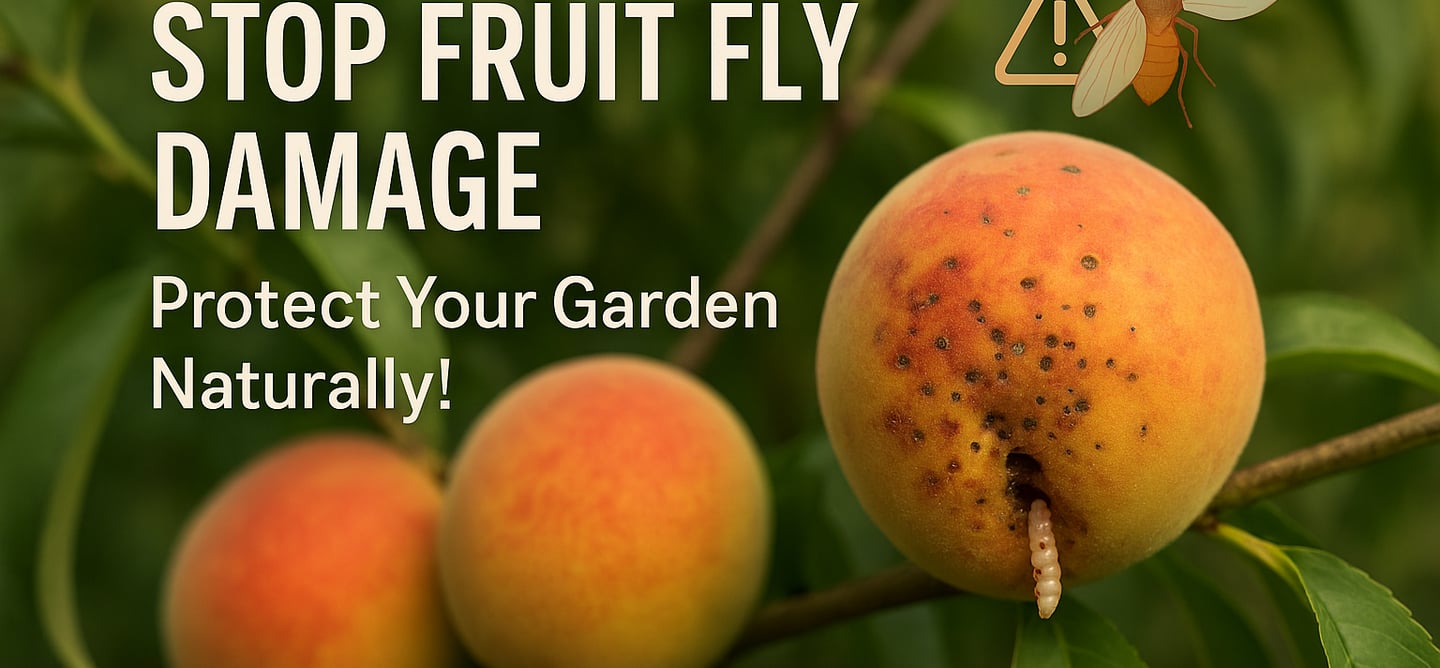🌿 GROWPlantWell – Nurture Nature, Transform Your Space 🌿

Protecting Your Harvest: A Seasonal Guide to Managing Fruit Flies in Australia
Protect your garden from fruit flies with natural, integrated methods. Learn how to trap, bait, and net fruit flies for a healthy, fly-free harvest all year.
Rashid Saleem
8/5/20252 min read


Fruit flies, particularly Queensland fruit fly (Bactrocera tryoni) and Mediterranean fruit fly (Ceratitis capitata), are one of the most destructive pests for backyard gardeners across Australia. If you’ve noticed small holes in your fruit or it’s rotting prematurely, chances are you have fruit fly damage. But don’t worry — with a smart, seasonal, and integrated management plan, you can protect your produce and your garden naturally.
🪰 What Makes Fruit Flies a Problem?
Female fruit flies lay eggs inside ripening fruit.
Larvae (maggots) tunnel through fruit, making it inedible.
They reproduce rapidly in warm weather.
They impact home gardeners just as much as commercial growers.
🌍 Fruit Fly Risk Zones in Australia
Different parts of Australia face varying levels of fruit fly pressure. Here's a quick overview:
High Risk:
Southeast Queensland
Northern New South Wales
Moderate Risk:
Coastal New South Wales
Victoria
Southern Western Australia
Low to Very Low Risk:
Tasmania
Arid inland areas
Pest-Free Zones (Strict Biosecurity Laws):
Riverland in South Australia (Do NOT carry fruit in/out)
📆 Fruit Fly Management Calendar (Integrated Approach)
Stay ahead of infestations by following this seasonal strategy:
Late Winter to Early Spring:
Set up pheromone traps and protein-based attractants to monitor early activity.
Spring:
Begin bait spraying or using organic protein baits weekly.
Hang mating disruption lures and check traps.
Summer:
Use fruit fly exclusion netting or bagging to protect ripening fruit.
Harvest early and frequently.
Continue baiting and monitoring.
Autumn:
Remove all fallen or damaged fruit quickly.
Continue baiting and remove spent lures.
Winter:
Sanitation is key — prune trees, clean up fruit debris, and monitor for any signs of overwintering flies.
🧪 What Are Pheromone Traps?
Pheromone traps use synthetic scents to attract and catch male fruit flies, helping monitor population levels. They don’t eliminate all flies but are crucial for early detection and timing of other control measures. Popular types include:
Cuelure traps (for Queensland fruit fly)
Trimedlure traps (for Mediterranean fruit fly)
Combine traps with protein baits and netting for best results.
🧠 Integrated Pest Management (IPM) for Fruit Fly
The best way to control fruit fly is to combine strategies:
🍎 Trap: Use pheromone lures and protein attractants.
🧃 Bait: Spray protein bait weekly during fruiting season.
🕸️ Exclude: Use fine-mesh netting or paper bags.
🧹 Sanitize: Pick up fallen fruit and prune trees.
👩🌾 Monitor: Check traps weekly to assess risk levels.
🌱 Community action: Coordinate with neighbors for better control.
💡 Bonus Tips for Gardeners
Freeze or solarize infected fruit before composting.
Don’t bury maggoty fruit — it won’t kill larvae!
Grow low-risk crops like citrus, apples, or passionfruit, which are less prone to fruit fly.
Use decoy plants or trap crops away from your garden.
🤔 FAQs
Q: When is the best time to start controlling fruit flies?
A: Late winter to early spring is ideal to get ahead before populations boom.
Q: Are pheromone traps enough to stop fruit flies?
A: No — they are for monitoring. Combine with baiting, exclusion, and sanitation.
Q: Can I compost infected fruit?
A: Only after freezing or solarizing it. Composting live maggots will spread the problem.
Q: What’s the best fruit fly netting?
A: Use UV-stable mesh with holes smaller than 1.6 mm to keep fruit flies out.
🏡 Final Thoughts
By understanding your risk zone and following a seasonal integrated management plan, you can protect your precious fruit and vegetable crops from destructive fruit flies. Whether you're growing tomatoes, mangoes, or backyard stone fruit, now is the time to act — because the best fruit is fly-free!